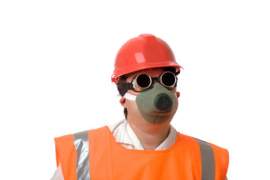
Occupational Safety and Health Administration (OSHA)

Popular In Construction
Contractors State License Board Construction Projects General Contractor Workplace Safety Construction Safety Contractor License Safety Equipment Safety Insurance Green Construction Health And Safety At Work Act 1974 Facts About Construction Loans Health And Safety At Work Act
What is the Occupational Safety and Health Administration (OSHA)?
The Occupational Safety and Health Administration (OSHA) is a branch of the Federal Government’s Department of Labor, which serves as the regulatory institution responsible for the oversight and authorization of employment and labor undertaken within the commercial marketplace in the United States of America.
While the Department of Labor serves as the overarching regulatory body, the Occupational Safety and Health Administration (OSHA) serves as the regulatory body undertaking the oversight of standards and practices undertaken in the workplace; this includes the determination and examination of the respective measures of workplace safety enacted by an employer.
Standards and Practices Mandated by the Occupational Safety and Health Administration (OSHA)
The examination and approval of the following practices and standards undertaken within the workplace are considered to be the sole responsibility of the Occupational Safety and Health Administration (OSHA); presumed violations of the protocol set forth by the Occupational Safety and Health Administration (OSHA) may result in investigation, as well as supplementary punitive recourse:
Ergonomics
The concept of ergonomics is one that was formulated with regard to the provision of acceptable workplace environments within the United States of America; the term itself is defined as the study of the relationship between a worker and their respective work environment. Due to the broad range latent within this term, the jurisdictional range of applicable standards and practices is vast:
Occupational Safety and Health Administration (OSHA) requires routine and schedule maintenance of all equipment and machinery
Occupational Safety and Health Administration (OSHA) requires routine and scheduled inspection of all equipment and machinery – as well as the building and structure in which the labor takes place
In order to maximize the ergonomic efficiency of a workplace, Occupational Safety and Health Administration (OSHA) requires investigations of the structural integrity latent within any facilities utilized by employees and laborers
Occupational Safety and Health Administration (OSHA) requires the adherence standards and practices involved with regard to chemical, substances , or object considered to be dangerous or unstable; not only must signage be present, which alerts employees and laborers, but the methods undertaken for both the utility and disposal of such objects must be approved by the Occupational Safety and Health Administration (OSHA) requires
Certificates of Operation
The United States’ Occupational Safety and Health Administration (OSHA) requires that any individuals operating machinery or equipment determined to pose potential risk, damage, or harm resulting from misuse receive sufficient training and certification prior to their respective use:
The required updating of all certifications, licenses, and safety courses undergone by all employees must take place; in addition, renewals and reexaminations are required to be undertaken by any or all employees utilizing machinery and equipment
Occupational Safety and Health Administration (OSHA) requires that Adequate signage be clearly displayed within the workplace, which includes notification of potential risk, hazards, damage, or injury
A required adherence to mandatory safety and security measures is required by OSHA, including required wearing of safety equipment; this is required in order to minimize injury and maximize safety protocol
Reporting a Workplace Safety Violation
A verified report of a presumed violation of workplace safety standards and practices may be issued to upon contacting the Occupational and Safety Hazard Administration (OSHA) through their telephone number: (800) 321-6742.
NEXT: A Guide to Understanding Construction Insurance





















